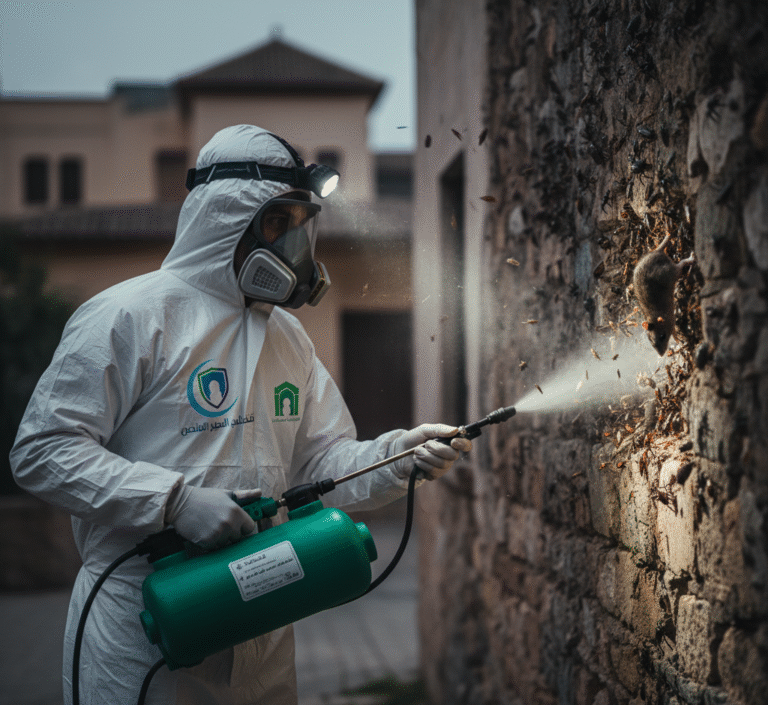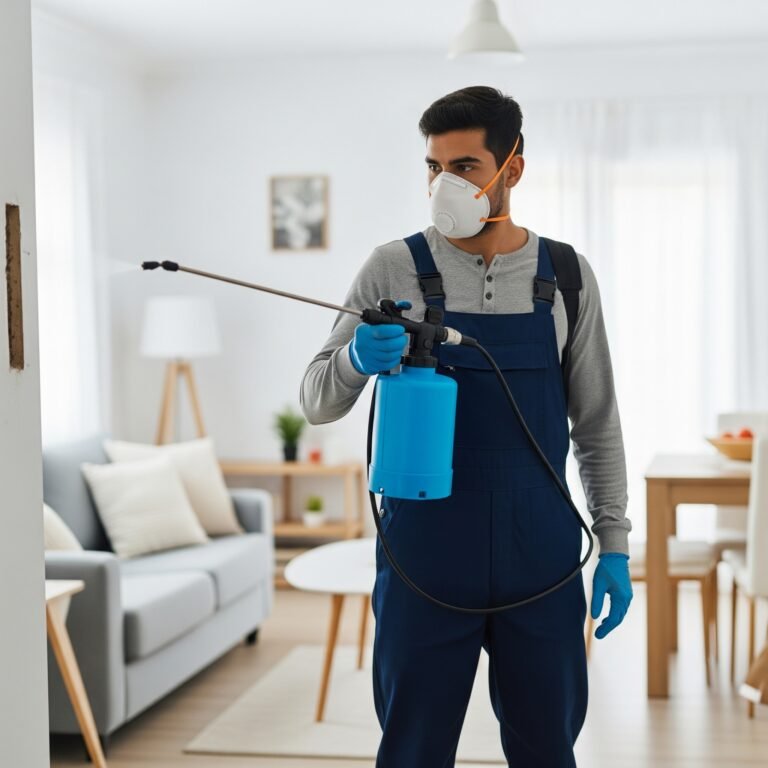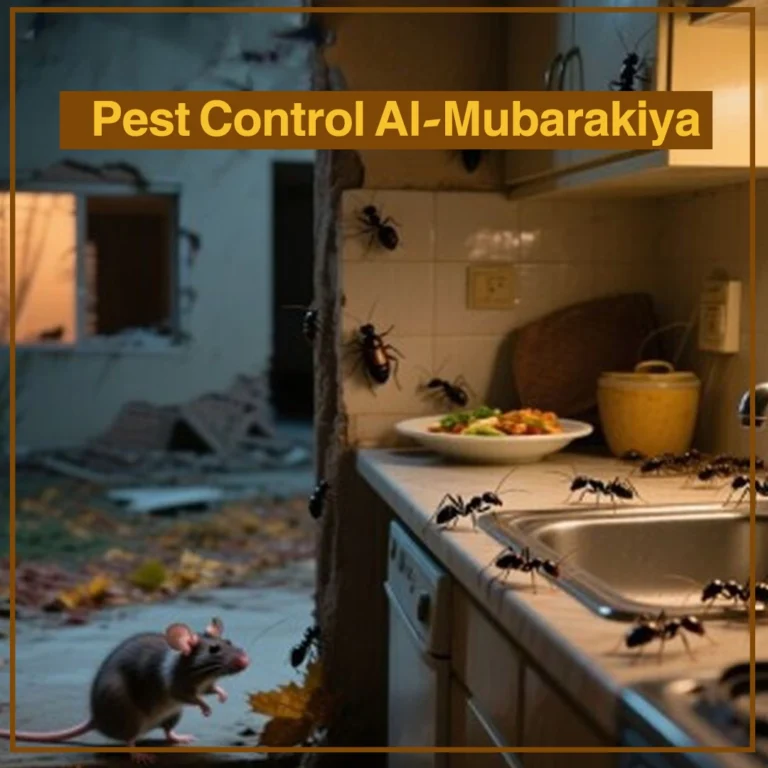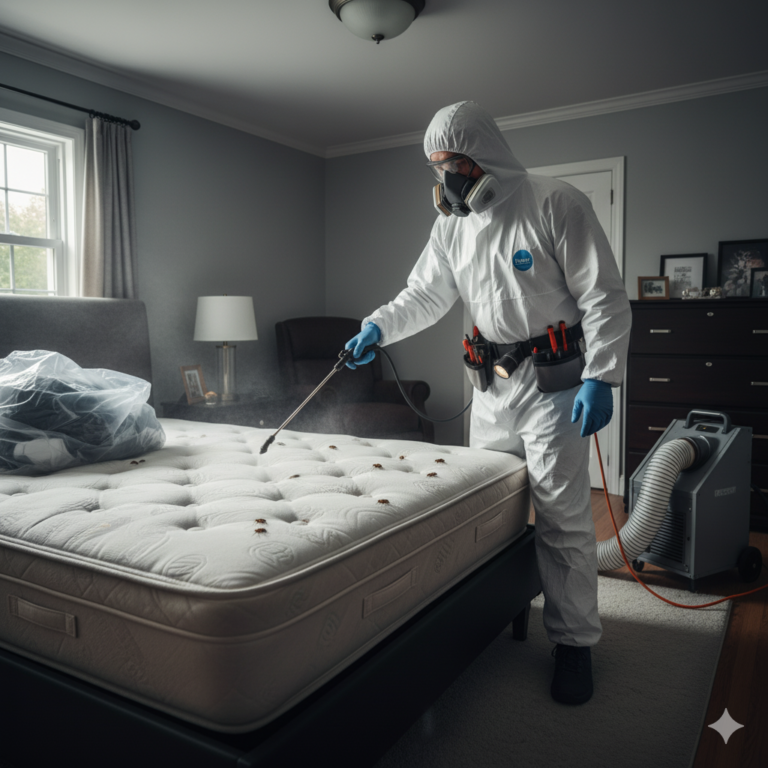Ant control In Kuwait
Introduction to Pest Control
Pest control is a critical process designed to manage and eliminate pests that can infest homes and other structures. These pests include a wide variety of organisms,. such as insects. , rodents, and even larger wildlife species, which can compromise the safety.
, hygiene, and overall well-being of a living environment. Effective pest control serves as a deterrent to the various health risks associated.
with pest infestations, including the spread of disease, food contamination, and property damage.
Common household pests include ants, cockroaches, termites, rodents, and bed bugs, among others. Each type of pest presents unique challenges and can be responsible for a range of problems. For instance, rodents such as rats and mice can carry diseases and.
cause significant damage to electrical systems and structures by chewing through wires and insulation. Similarly, termites can compromise the integrity of wooden structures, leading to costly repairs. Insects like ants and cockroaches can contaminate food supplies and trigger allergies in susceptible individuals.
The significance of pest control extends beyond mere eradication; it also encompasses prevention and maintenance strategies to ensure that homes remain pest-free. Timely intervention is paramount when dealing with pests, as delays can facilitate quick population growth and more severe infestations. Implementing integrated pest.
management techniques can.
help homeowners identify potential issues early, allowing for more effective and often less invasive solutions.
Understanding the importance of pest control is essential for creating a safe and healthy living environment. By acknowledging the potential threats posed by.
common household pests and taking proactive measures, homeowners can protect their health and home from the adverse effects of infestations.
Understanding Common Pests
Pests are a common problem in households, and understanding their behaviors.
, life cycles, and potential damages is essential for effective pest control. Among the most prevalent household pests are ants, rodents, cockroaches.
, and termites, each exhibiting unique characteristics that can complicate eradication efforts.
Ants are social insects that form colonies, often foraging in search of food. They can invade homes in large numbers, damaging property and contaminating food supplies. Their life cycles consist of several stages: egg, larva, pupa, and adult. The most common ant species found.
in homes include carpenter ants and odorous house ants, both of which can cause structural damage if left untreated.
Rodents, such as mice and rats, are another significant concern. They not only pose a health risk by transmitting diseases through their droppings but can also gnaw.
through wires and insulation, potentially leading to fire hazards. Rodents reproduce quickly, with a single pair capable of producing dozens of offspring in a year. Their nesting habits often lead them to reside in attics or basements, where they can remain undetected.
until the problem escalates.
Cockroaches are notorious for their resilience and ability to thrive in various environments. Common species include the German cockroach and the American cockroach.
, both of which can introduce allergens and pathogens into your home. Their life cycle includes three stages: egg, nymph, and adult, with adults capable of reproducing.
within months, making quick intervention vital.
Finally, termites are highly destructive pests that feed on wood and other cellulose materials. They can cause significant structural damage before they are even detected, as they often work silently within wood. Understanding the life cycles of termites, which involve.
stages such as egg, nymph, and adult, can provide insights into effective prevention and control strategies.
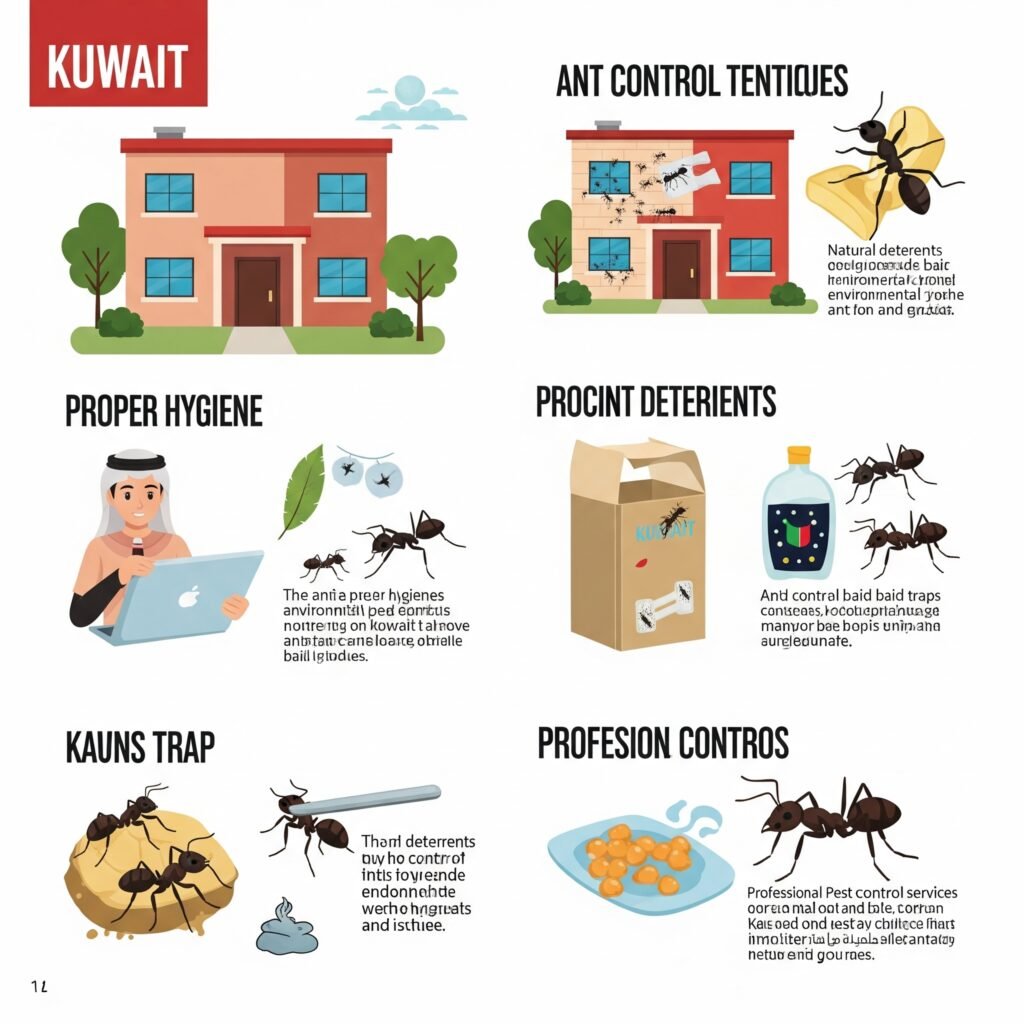
Importance of Pest Control
Pest control is a fundamental aspect of maintaining public health, protecting property, and ensuring economic stability. Pests, including rodents, insects, and other vermin, can.
pose severe risks to human health by acting as vectors for various diseases. For instance, rodents are known to carry diseases such as hantavirus and leptospirosis.
, while insects like mosquitoes can transmit viruses including West Nile and Zika. The presence of these pests can lead to significant health risks, particularly for vulnerable populations such as children and the elderly. Therefore, effective pest control is essential not only to mitigate these health hazards but also to promote a safer living environment.
In addition to health implications, pests can cause considerable damage to properties. Termites, for example, are notorious for their ability to compromise wooden structures, leading to costly repairs and potential safety hazards. Similarly, invasive species can disrupt ecosystems and reduce the integrity of landscapes. Proactive pest management is critical in preventing these types of damages, allowing homeowners and businesses to protect their investments effectively.
The economic impact of pest infestations also cannot be overlooked. Research indicates that businesses experience substantial financial losses due to pest-related issues, including decreased productivity, loss of inventory, and increased maintenance costs. By investing in comprehensive pest control strategies, property owners can safeguard their resources and ensure operational continuity. This not only enhances the safety and comfort of occupants but also contributes to overall economic resilience.
In essence, pest control is not merely about eliminating unwanted organisms; it is a vital practice that fosters public health, preserves property integrity, and supports economic viability. Ensuring a pest-free environment should be regarded as a priority for both individuals and communities alike.
Traditional Methods of Pest Control
Traditional pest control techniques have been utilized for decades and encompass a range of approaches designed to eliminate unwanted insects and vermin from residential properties. These methods primarily include the use of chemical pesticides, alongside other mechanical and physical removal strategies. One of the primary advantages of employing chemical pesticides is their efficacy in quickly reducing pest populations. Pesticides are formulated to target specific pests, providing immediate results that can be particularly beneficial in cases of severe infestations.
However, reliance on chemical treatments does present certain disadvantages. One significant concern is the potential risk posed to human health and the environment. Many chemical pesticides contain substances that can be harmful if inhaled or ingested, leading to adverse health effects on humans and pets. Furthermore, these chemicals can leach into soil and waterways, contributing to broader ecological imbalances. Safety precautions, such as wearing protective gear and ensuring proper ventilation, are essential when applying these products, but these measures may not fully mitigate risk.
In addition to chemical methods, traditional pest control also includes mechanical options, such as traps or barriers, which can be effective in certain situations. These methods typically offer a safer alternative, as they do not involve the use of toxic substances. Nonetheless, mechanical solutions may require more time and effort to yield significant results compared to chemical pesticides. It is also important to note that these approaches may be less effective against larger infestations. Therefore, an integrated pest management approach, which combines chemical, mechanical, and natural methods, is often recommended to achieve optimal pest control. By considering both the benefits and drawbacks of traditional techniques, homeowners can make informed decisions about their pest control strategies.
Biological Pest Control Methods
Biological pest control methods rely on the use of natural predators, parasites, or pathogens to manage pest populations effectively. This sustainable approach to pest management minimizes the environmental impact associated with chemical pesticides, aligning with the growing emphasis on eco-friendly practices in agriculture and household pest control. By harnessing nature’s own mechanisms, biological control provides a viable strategy for maintaining a pest-free home.
One common biological control method involves introducing natural predators to target specific pest species. For instance, ladybugs are often employed to control aphid populations, as they voraciously feed on these pests. Similarly, nematodes—microscopic roundworms—can be used to combat soil-dwelling pests like grubs and caterpillars. These predators are typically more localized in their feeding habits and can provide a sustainable solution that reduces the need for chemical interventions.
Another effective strategy is the use of parasitic organisms. Parasitic wasps, for instance, lay their eggs inside or on pest species, leading to the pest’s demise as the larvae develop. This form of biological control not only curtails pest populations but also integrates seamlessly into the existing ecosystem, promoting biodiversity and resilience against future pest invasions.
The effectiveness of biological methods can vary, depending on multiple factors such as the specific pests being targeted, environmental conditions, and the presence of adequate habitats for beneficial organisms. However, when implemented properly, biological pest control can provide long-lasting results. Additionally, these methods pose fewer risks to human health and non-target species, making them a preferred choice for many environmentally conscious homeowners.
Incorporating biological pest control methods into an integrated pest management plan can yield multiple benefits, not only in reducing pest populations but also in fostering a healthier ecosystem. By valuing the role of natural antagonists, individuals can contribute to a sustainable future while enjoying a pest-free environment.
Preventive Measures in Pest Control
Effective pest control begins long before an infestation occurs. Preventive measures play a crucial role in maintaining a pest-free environment within the home. These strategies focus on creating conditions that are unwelcoming to potential pests, thereby reducing the likelihood of their presence.
One of the fundamental aspects of pest prevention is proper sanitation. Maintaining a clean living space is essential; this includes routine cleaning of surfaces, proper disposal of food waste, and regular vacuuming to remove crumbs and debris that may attract pests. Storing food in airtight containers also helps to eliminate potential food sources for rodents and insects, making the environment less appealing.
Another critical strategy is sealing entry points throughout the home. Pests can enter through small gaps and crevices; therefore, homeowners should inspect their properties for any openings that may serve as access points for unwanted guests. This may involve repairing window screens, sealing cracks in walls, and ensuring that doors and windows close tightly. Taking these measures will significantly decrease the chances of pests finding their way inside.
Routine inspections are also vital in pest prevention. Regularly checking for signs of pest activity, such as droppings, nests, or damage to property, allows homeowners to address potential infestations before they escalate. It is advisable to establish a schedule for these inspections, which may involve examining basements, attics, and outdoor areas. Additionally, landscaping should be well-maintained, as overgrown vegetation can harbor pests and provide them with hiding spots.
By implementing these preventive strategies—prioritizing cleanliness, sealing potential entry points, and conducting thorough inspections—homeowners can create an environment that deters pests and promotes a healthier living space.
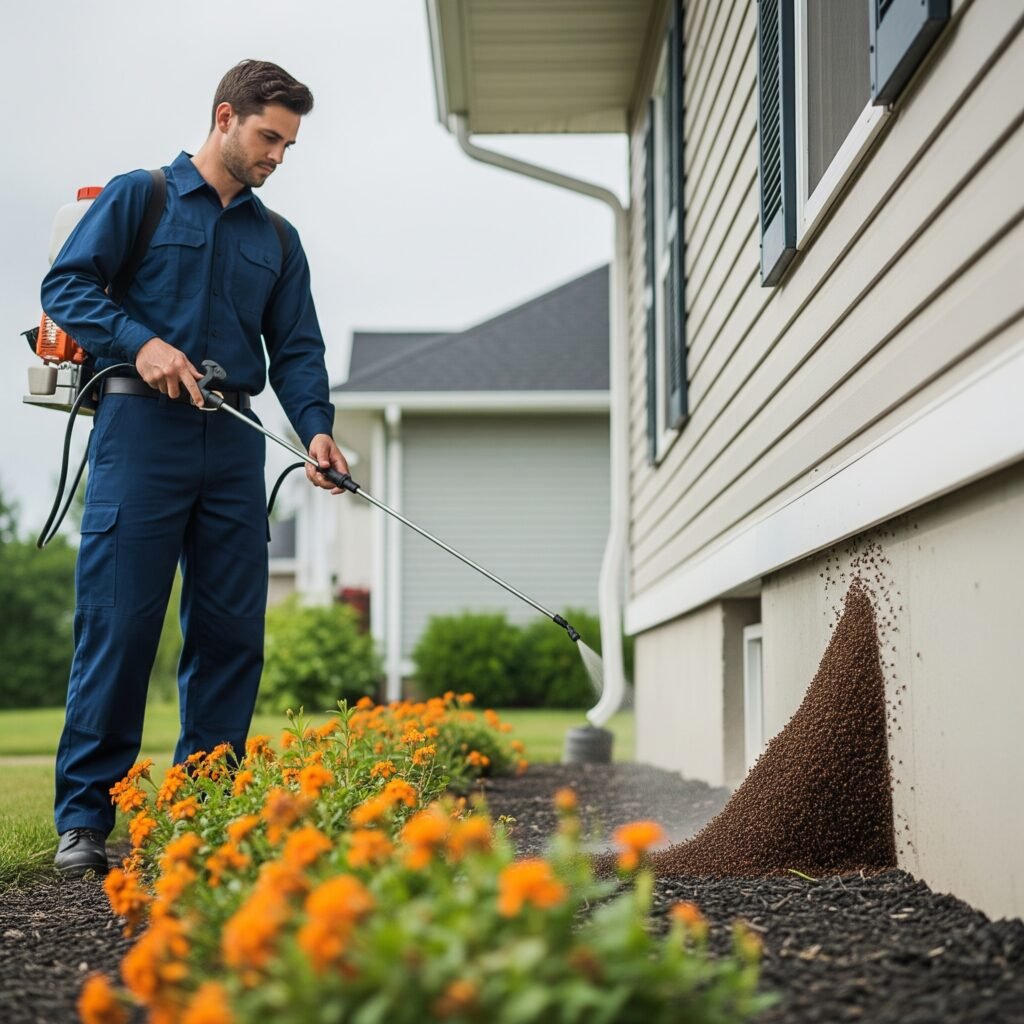
Integrated Pest Management (IPM)
Integrated Pest Management (IPM) is a comprehensive approach that focuses on the sustainable management of pest populations through the integration of various control strategies. This method is built on the premise that effective pest control is achieved by understanding the complex interactions between pests, their environment, and the various management tactics available. The primary goal of IPM is to minimize pest damage while reducing reliance on chemical pesticides, thereby ensuring a safer and healthier living environment.
The IPM approach begins with thorough monitoring of pest populations and their associated damage. This monitoring process involves regular inspections to identify the types of pests present and the extent of their impact. Accurate data collection enables homeowners and pest control professionals to assess the situation and determine threshold levels, which are the critical points at which pest populations begin to cause unacceptable harm. Establishing these thresholds is fundamental as it prevents unnecessary treatments and promotes more focused interventions.
IPM employs a diverse range of control tactics, combining biological, cultural, physical, and chemical methods tailored to the specific pest problem. Biological control involves using natural predators or parasites to manage pest populations effectively. Cultural practices may include crop rotation, sanitation measures, and habitat manipulation to make the environment less conducive to pest infestations. Physical tactics, such as traps and barriers, can also serve as effective non-chemical means to curb pests. When necessary, judicious use of chemical treatments is integrated into the plan, applying targeted and reduced-risk pesticides only when other methods prove insufficient.
This holistic approach not only addresses immediate pest issues but also promotes long-term prevention and management strategies. By fostering a healthy ecosystem and reducing harmful chemical inputs, IPM paves the way for a pest-free home while prioritizing environmental sustainability.
When to Seek Professional Help
Identifying a pest problem in your home can be daunting, especially when it escalates from a minor annoyance to a significant issue. A thorough assessment of the situation is crucial in determining whether professional pest control services are necessary. There are several indicators that suggest it may be time to seek expert help. These include the visible presence of pests, the extent of the infestation, and the potential risks associated with the particular pests inhabiting your space.
Firstly, if you encounter a sudden spike in pest activity, such as seeing numerous insects or rodents, it may indicate a more severe infestation. Pests like termites and rodents can cause structural damage or pose health hazards, necessitating immediate intervention. Additionally, if you notice any signs of nesting or reproduction, such as droppings or nesting materials, the problem may be beyond the scope of DIY solutions.
Secondly, if previous attempts at pest control have proven ineffective, this is a strong indicator that professional help is warranted. Pest control experts are trained to identify the source of the infestation and implement tailored strategies to eliminate it effectively. Moreover, they possess access to advanced tools and treatments not available to the average homeowner, which can lead to more efficient results.
Finally, certain pests can pose significant health risks, especially in households with children, elderly individuals, or pets. For example, bedbugs, wasps, and rodents can carry diseases or induce allergic reactions. Hiring a professional pest control service ensures the problem is addressed thoroughly and safely, minimizing health risks while also protecting your home. Their expertise provides peace of mind that the infestation will be resolved effectively, allowing you to maintain a safe and comfortable living environment.
Conclusion
Effective pest control is a crucial aspect of maintaining a healthy and safe home environment. Throughout this blog post, we have explored a variety of techniques and strategies that can help homeowners tackle pest issues effectively. It is clear that addressing pest infestations requires a multifaceted approach that combines preventive measures, active management, and informed decision-making.
One key takeaway is the significance of proactive strategies, such as regular inspections and maintaining cleanliness in living spaces. By preventing pests from entering the home, homeowners can significantly reduce the likelihood of infestations. Furthermore, adopting safe pest control practices is essential. Utilizing non-toxic solutions and consulting with professionals not only protects the residents but also minimizes harm to the environment.
Additionally, staying informed about the latest pest management options enhances one’s ability to address potential issues promptly. Knowledge about the behaviors and breeding patterns of common pests can empower homeowners to act before a minor problem escalates into a severe infestation. It is also advisable to keep abreast of new developments in pest control technologies and strategies, as the field continuously evolves to offer more effective solutions.
In conclusion, maintaining a pest-free home necessitates dedication and awareness. By integrating the techniques discussed, homeowners can create a safer living environment that deters pests and safeguards their health. The combination of a proactive mindset, safe practices, and ongoing education about pest control measures will ensure that homes remain inviting and free from unwanted invaders. Taking these steps not only enhances comfort but also protects property and promotes overall well-being.
-
rodents
rodents 🐀 Introduction to Rodent Control in Kuwait Rodents are among the most troublesome insects and animals that cause. significant […]
-
Pest Control Al-Andalus
Pest Control Al-Andalus We offer you the. best services to remove panic from the home, family, elderly and children. We have […]
-
Pest Control Al Firdous
Pest Control Al Firdous We offer you the. best services to remove panic from the home, family, elderly and children. We have […]
-
Pest Control Al-Masayel
pest control Al-Masayel We offer you the. best services to remove panic from the home, family, elderly and children. We have a […]
-
Pest Control Al-Mubarakiya
pest control Al-Mubarakiya We offer you the. best services to remove panic from the home, family, elderly and children. We have […]
-
Bed bug control Kuwait
Bed bug control Kuwait Are you looking for safe bedbug control in Kuwait? We offer effective solutions that are safe […]
